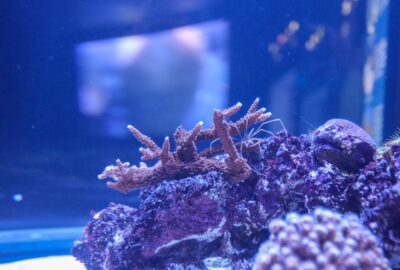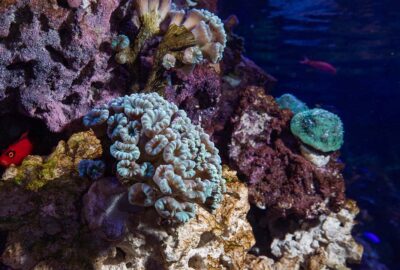Working Together to Protect Coral Reefs for Future Generations
With western Atlantic coral reefs under threat, the Aquarium has joined the SAFE Coral program to collaborate on conservation efforts.
By New England Aquarium on Wednesday, July 23, 2025

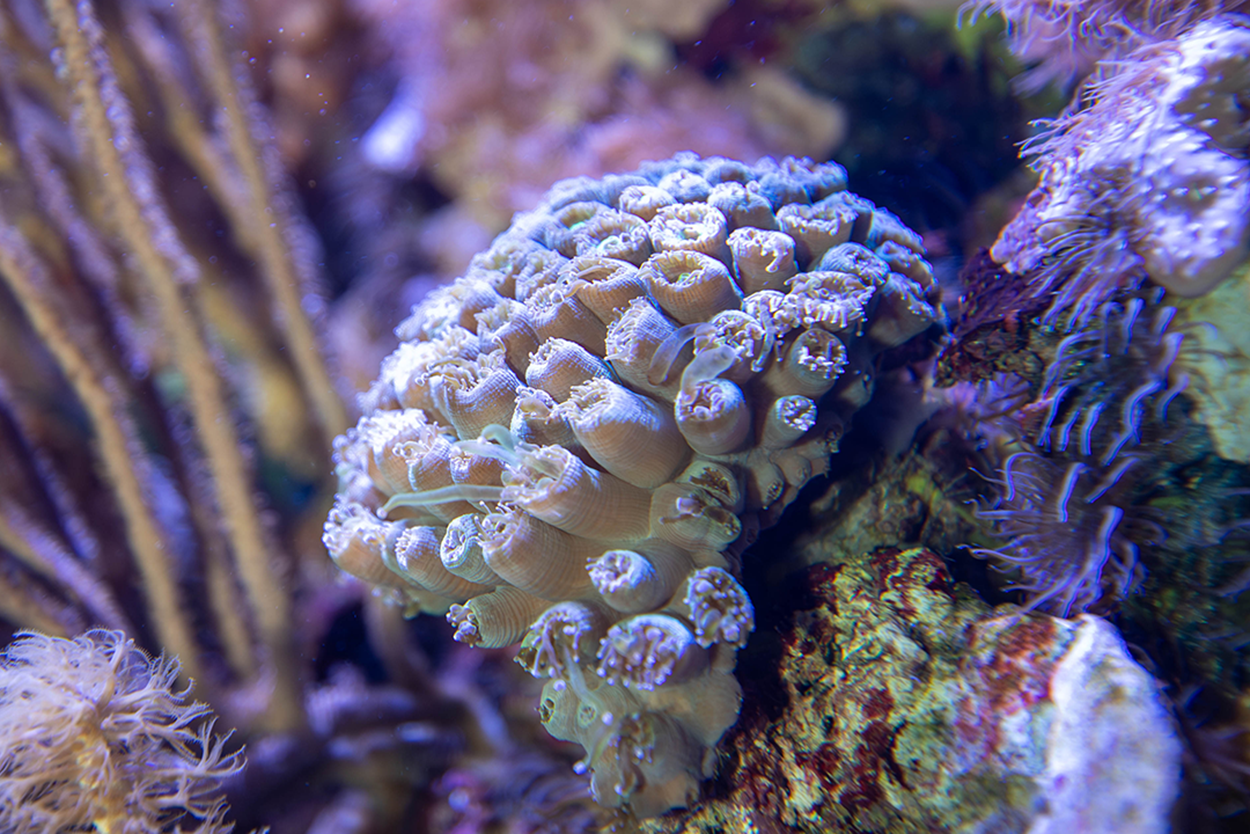
Did you know that one of the world’s largest coral reefs is in the United States?
The Florida Reef stretches about 350 miles from the Dry Tortugas, near Key West, north along the Atlantic coast. But more than 20 species of stony coral—the reef-building corals that form its foundation—are in decline due to an existential threat: Stony Coral Tissue Loss Disease.
Healthy corals are vital to a healthy ocean. Coral reefs are home to about a quarter of marine life, and more than a billion people around the world rely on them for food and jobs.
The New England Aquarium recently joined the Association of Zoos and Aquariums’ SAFE (Saving Animals From Extinction) Coral program to support collaborative efforts to protect these essential species. The Aquarium also participates in several other SAFE programs, including SAFE Sharks and Rays, SAFE Sea Turtle, and SAFE African Penguin.
“I’ve gotten to go out in the field a few times down in that area, and it’s very sobering to see the state of the reefs and why this is such an important effort to help preserve these animals,” said Sean Costello, senior animal care specialist at the Aquarium and our institutional representative in the SAFE Coral program. “This is super important and it’s close to home.”
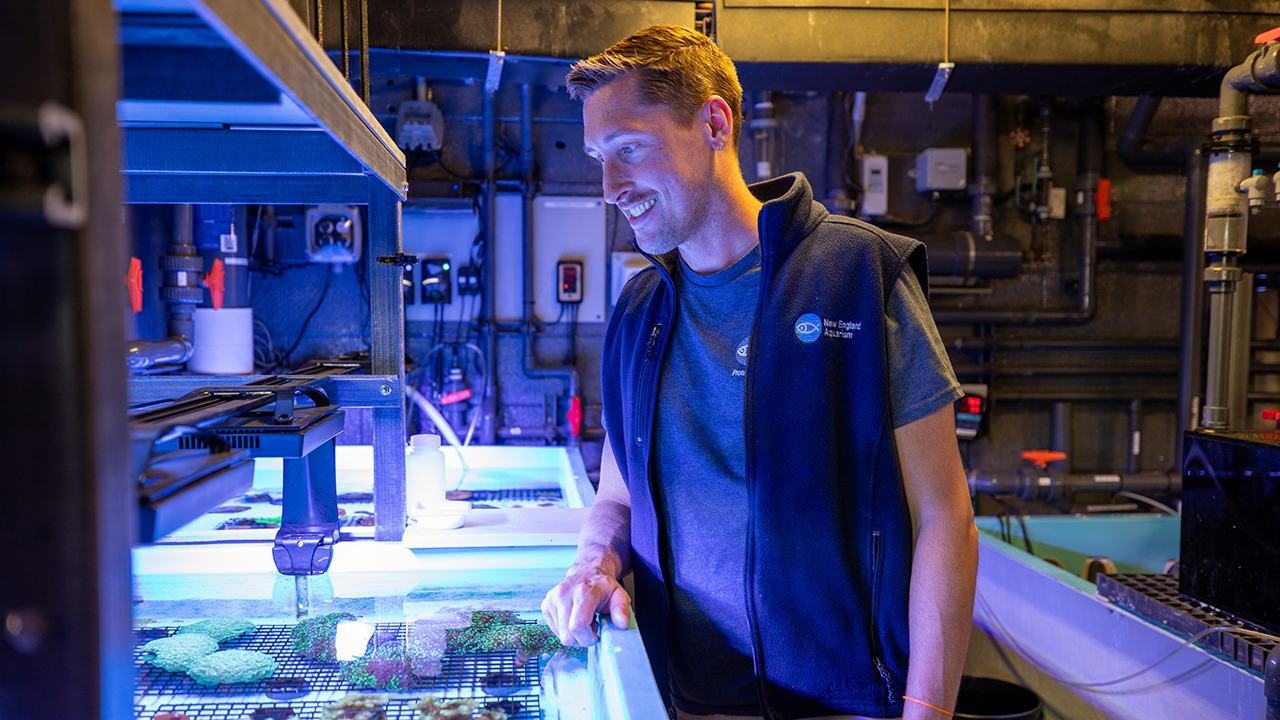
Rescue, restore, and educate
Stony Coral Tissue Loss Disease, first identified in 2014, is fast-spreading and extremely deadly to affected corals. In response to this threat, the SAFE Coral program’s network of about 20 aquariums and conservation organizations has rescued healthy corals from vulnerable species and is caring for them in bio-secure gene banks at their facilities. These corals are carefully protected to preserve genetic diversity of the species, advance breeding methods, and support future reef restoration. So far, scientists have successfully bred more than a dozen of the coral species, and some of the offspring are already being planted back onto Florida’s reefs.
Education is also a key part of the SAFE Coral effort, helping more people learn about the importance of coral reefs and inspiring the next generation of ocean stewards.
The Aquarium’s Yawkey Coral Reef Center exhibit features corals and other animals native to the tropical western Atlantic, where SAFE Coral’s conservation efforts are currently focused. The exhibit includes several species that are being affected by Stony Coral Tissue Loss Disease, including staghorn coral and large-cup star coral. Aquarium educators are often present to provide in-depth information about these animals and why they’re so important.
“Our involvement aligns with our mission to protect the blue planet and strengthens our ability to support science-based coral restoration efforts, share our expertise in coral care and propagation, engage the public in coral conservation, and collaborate with other institutions on reef recovery,” Sean said. “At this stage, we’re participating at the thought leadership level—offering expertise and supporting initiatives as the program grows.”
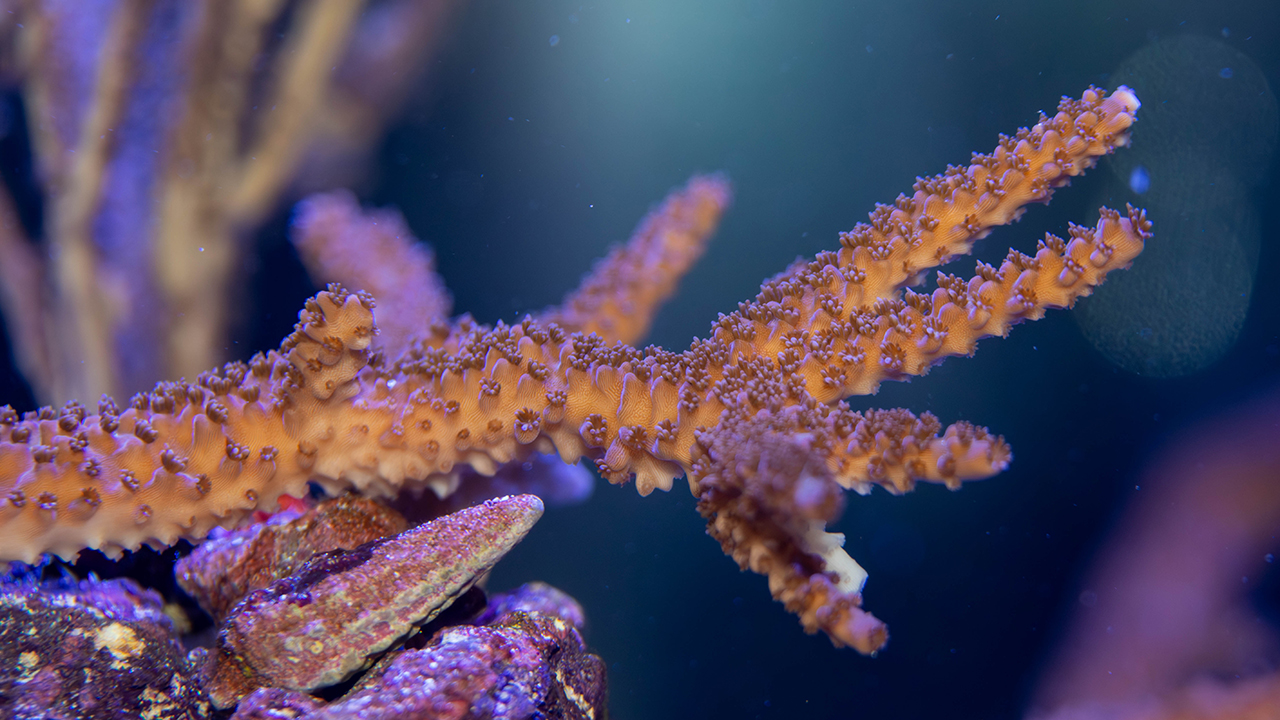
From exhibits to oceans
Drawing on their extensive work with corals, our aquarists are exploring how the Aquarium might further support this vital conservation effort.
“I’m just excited to see what kind of opportunities and collaborations we will get to be part of moving forward,” Sean said.
While focused on the western Atlantic region for now, SAFE Coral aims to expand its efforts over the next decade to the many threats facing corals around the globe. Its long-term vision is a future where coral reefs are an abundant, healthy, and genetically diverse component of thriving marine ecosystems that benefit both wildlife and human communities.
Plan your visit to the Aquarium to include a stop at the Yawkey Coral Reef Center to learn more about these fascinating animals and conservation efforts underway to protect them!

